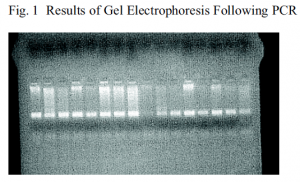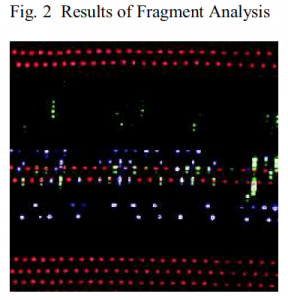R Brigham Dastrup, Devon Pearse and Dr. Jack W Sites Jr, Integrative Biology
On June 2, 1970, the turtle Podocnemis expansa was designated as endangered throughout its entire range by the US Fish and Wildlife Service. The turtle is known to exist in the Orinoco and Amazon river basins in South America.i Conservation efforts continue to try and preserve the species. Additionally, several studies have been conducted to increase the knowledge base about P. expansa, including many aimed at better understanding their behavior. This knowledge could be critical in conservation efforts.
In this study, I am attempting to assess the presence or absence of multiple paternity among clutches of eggs layed by P. expansa in the Orinoco River basin. Using DNA markers, I am examining the genotypes of hatchlings from approximately forty clutches at seven separate loci to determine single or multiple paternity. Blood tissue samples were drawn from hatchlings in Venezuela and transported to Brigham Young University for study. The genotypes of the mothers are not known.
I first obtain DNA from the tissue of each individual using standard extraction procedures. Then I determine the amount of DNA successfully extracted per individual qualitatively using agarose gel electrophoresis, with dilutions of DNA samples and repeat extractions following as necessary. After I have assured the quantity and quality of DNA, I perform seven separate runs of PCR (polymerase chain reaction) to amplify the seven different microsatellite loci. (See Fig. 1) I submit the products of PCR to the BYU DNA Sequencing Center where they are subjected to acrylamide gel fragment analysis. (See Fig. 2) When these results are received, comparative analysis between individuals of each clutch begins.
The results of the fragment analysis give data that I process to identify the approximate length of each microsatellite fragment ii using computer programs designed for this purpose. At each of the seven loci for each individual, computer data must be compared with the fragment analysis data to ensure accuracy. When this process is complete, each individual is identified as either heterozygoteiii or homozygoteiv at each locus. The length in base pairs of each fragment is also recorded.
Once I have compiled these data, I determine the paternal contributions to the clutch. Because each parent can contribute a maximum of two alleles at a given locus, more than four unique fragment lengths within a clutch at a single locus positively identify multiple paternity. Additionally, the presence of homozygote individuals indicates that identical alleles were received from both parents, thus this allele counts for two in multiple paternity analysis. Therefore, the existence of more than four total contributed alleles in a clutch at a locus also positively identifies multiple paternity. I then compile the data from all seven loci to determine the overall pattern of paternity for each clutch. In clutches with a high enough number of individuals sampled, significant deviation from expected allele ratios can indicate multiple paternity, particularly when underrepresented alleles appear consistently with the same individual(s) throughout the different loci.
Due to the number of individuals, loci and clutches being analyzed, this project is not scheduled to be completed until April 2003, so only preliminary data are now available. These data suggest that multiple paternity is present in at least some of the clutches.
_____________________________________
i http://ecos.fws.gov/servlet/SpeciesProfile?spcode=C00G
ii The four standard bases of DNA are A (adenine), C (cytosine), T (thymine) and G (guanine). Microsatellites are regions in the genome defined by highly repetitive DNA, usually tandem repeats. (ie—ATATATA, etc.) Due to a phenomenon referred to as “slippage,” the mutation rate for microsatellites is substantially higher than for a standard gene, with the most common mutation being the insertion or deletion of one or more copies of the repeated pair. This high mutation rate leads to high variability in the number of repeats at a given locus. Comparing these microsatellites of varying lengths between hatchlings can then be used to determine accurately which and how many parents contributed genetic material to the clutch, as further described above.
iii A heterozygote possesses two alleles of different lengths at the same locus.
iv A homozygote possesses two copies of the same sized allele.


